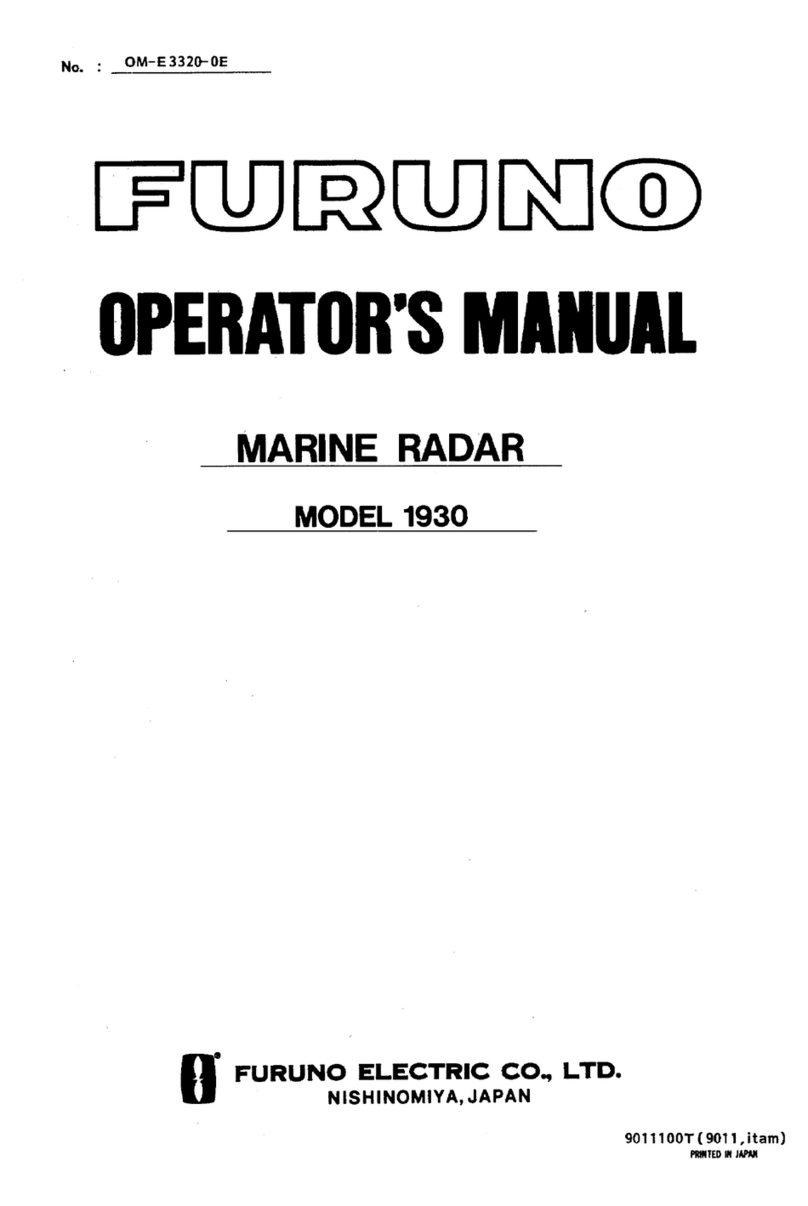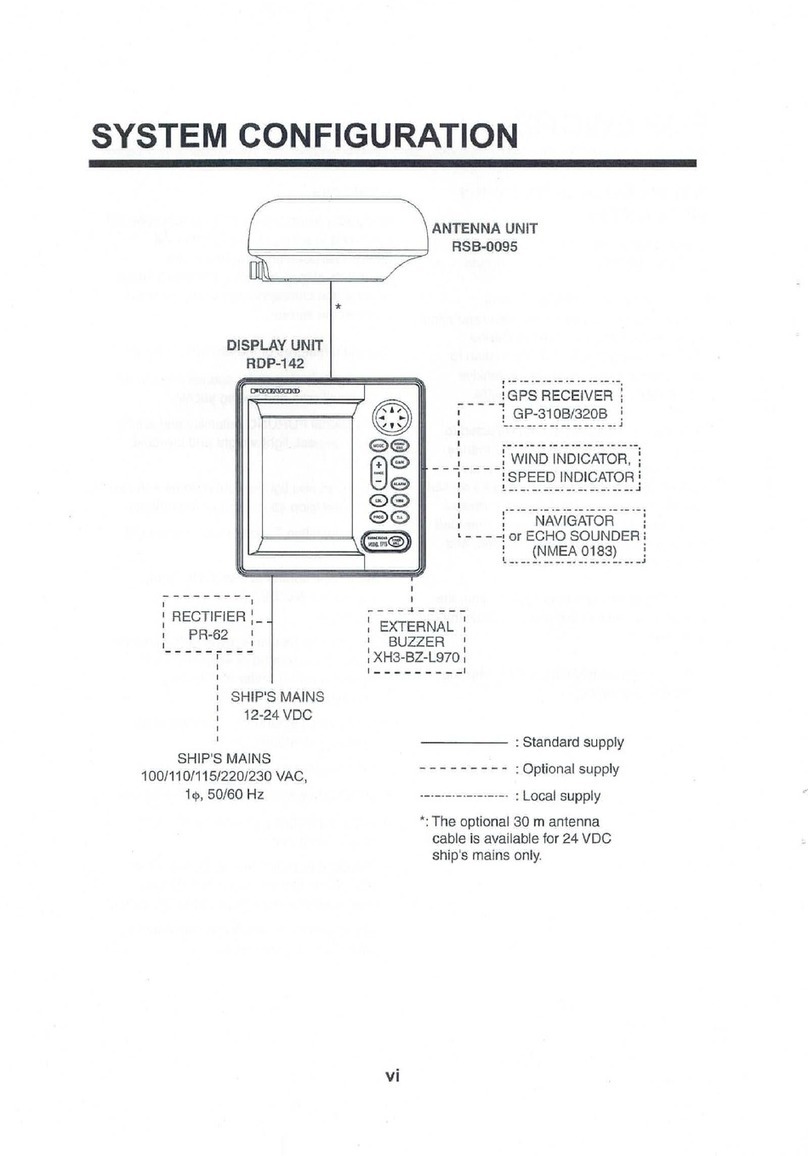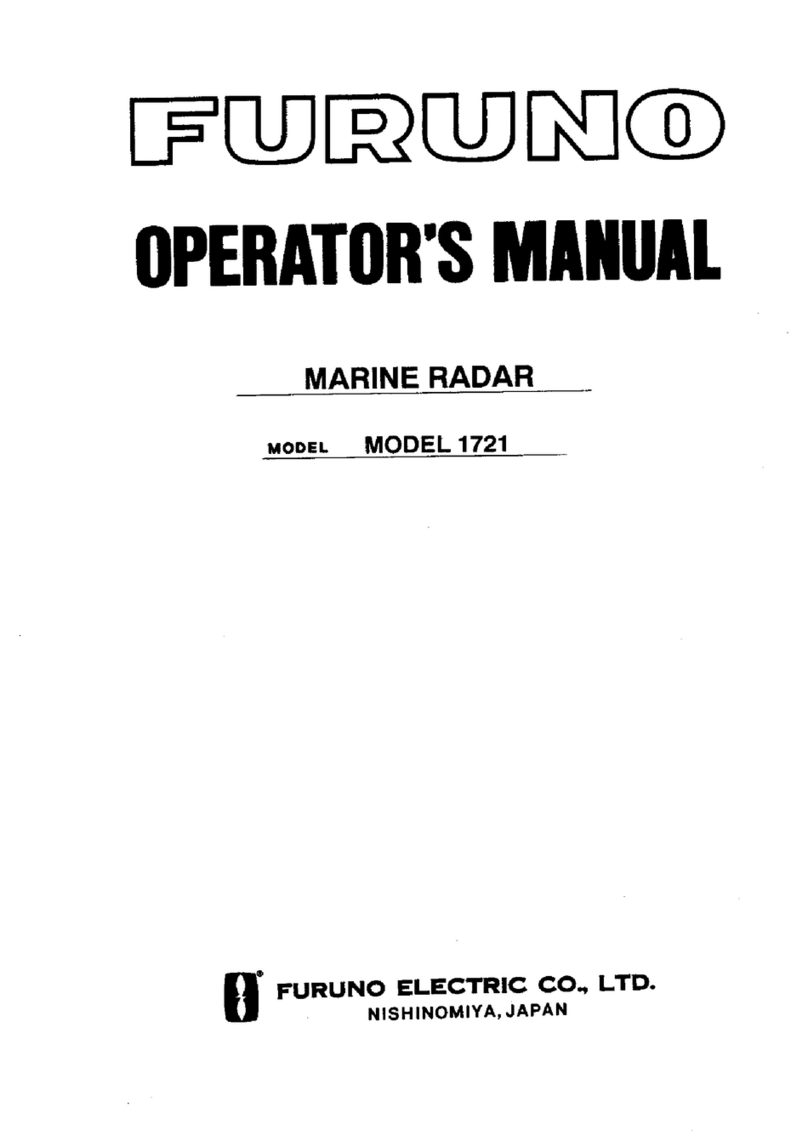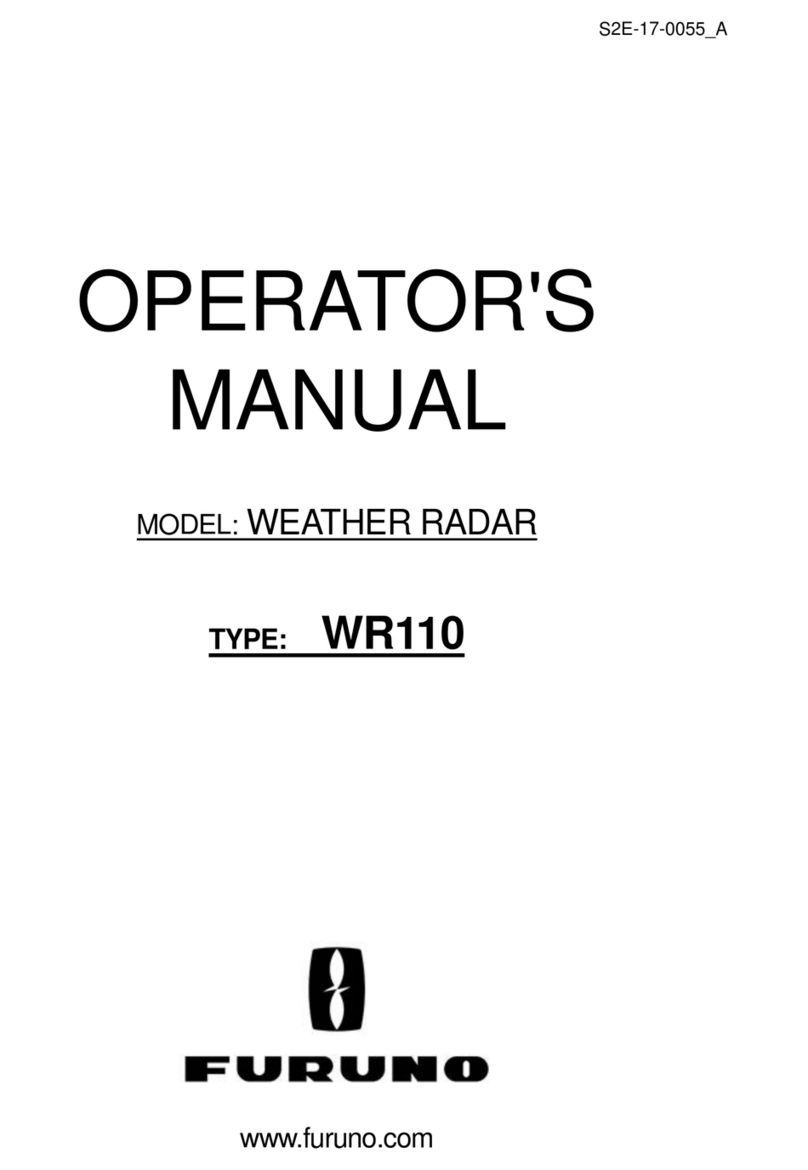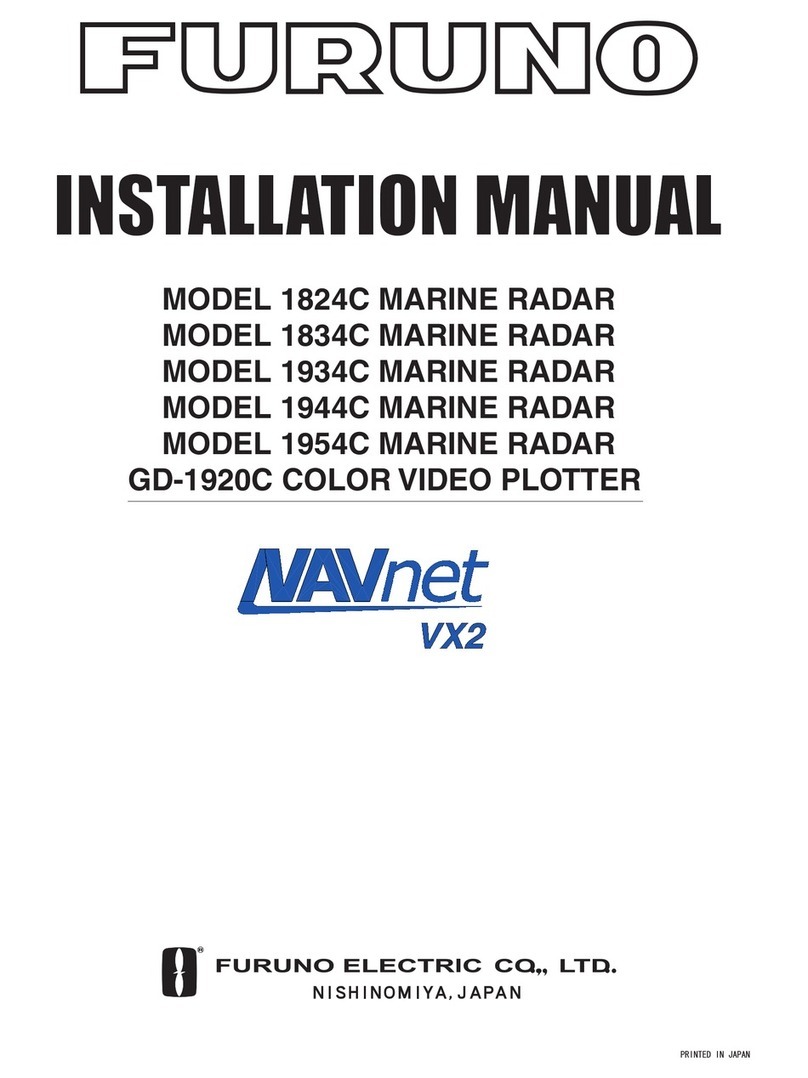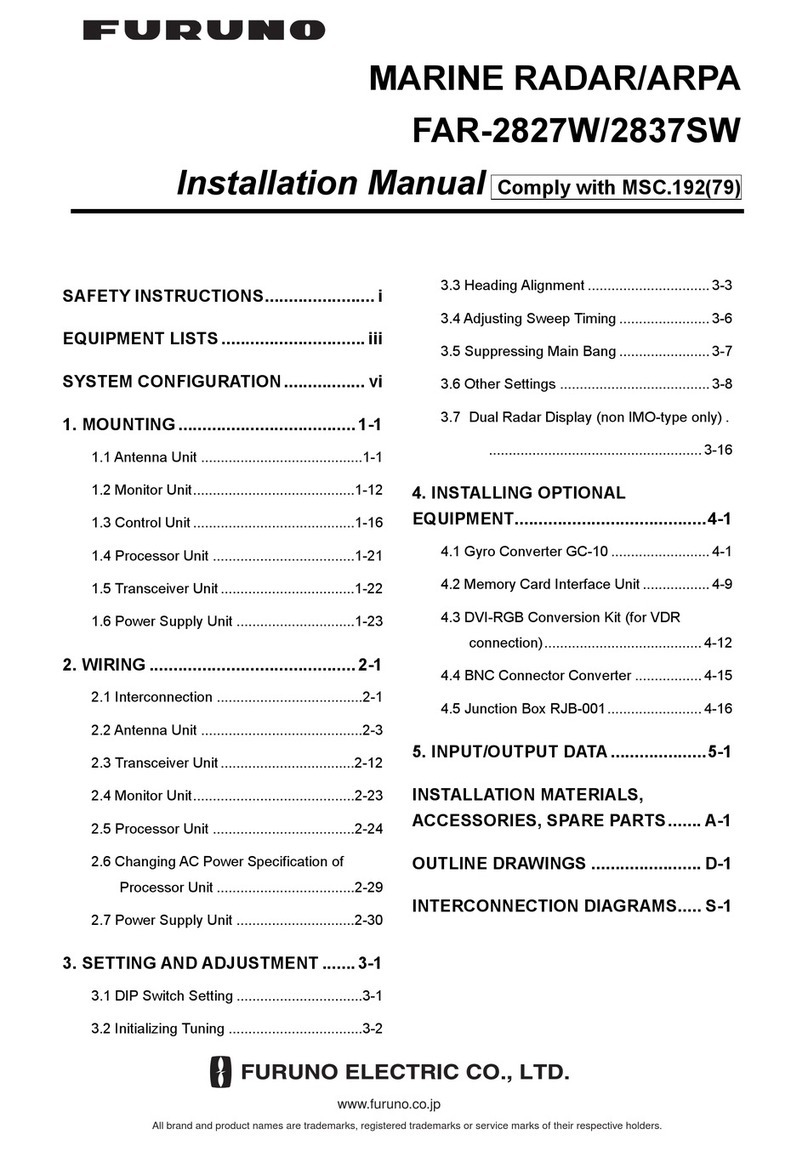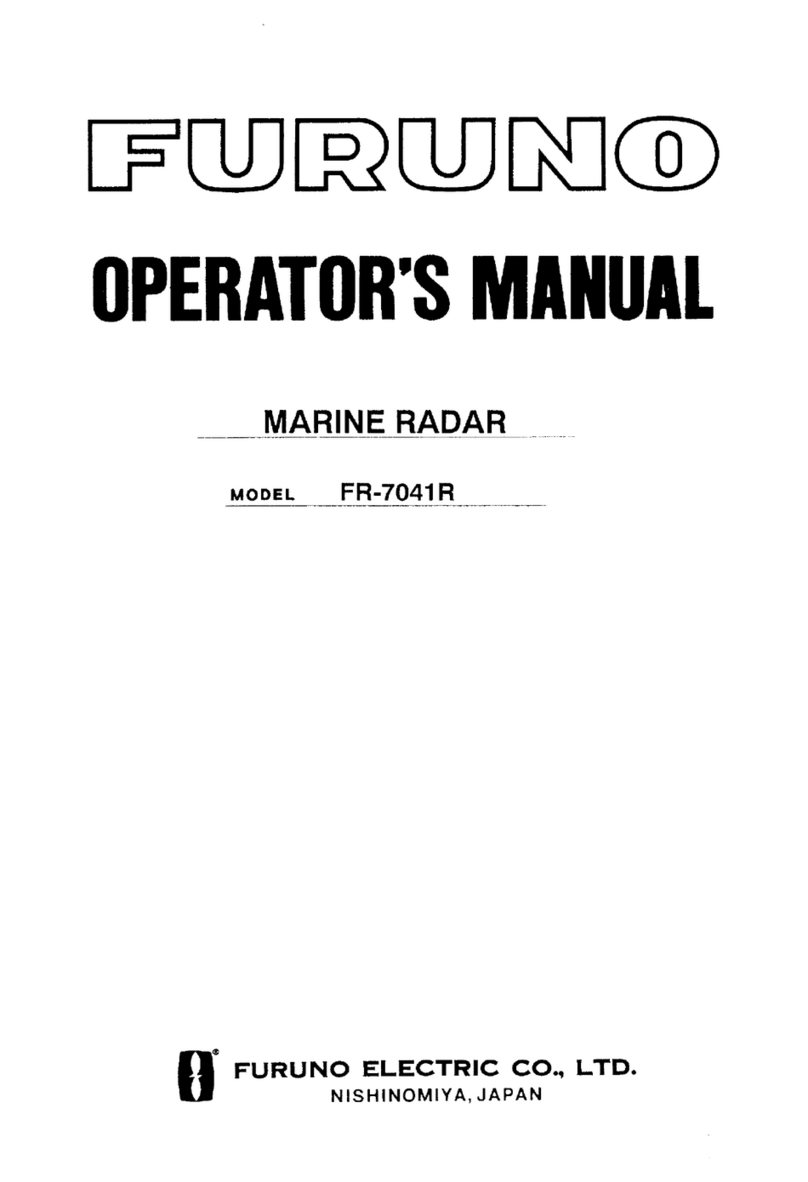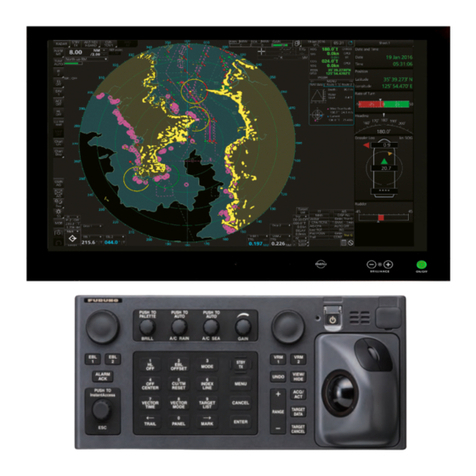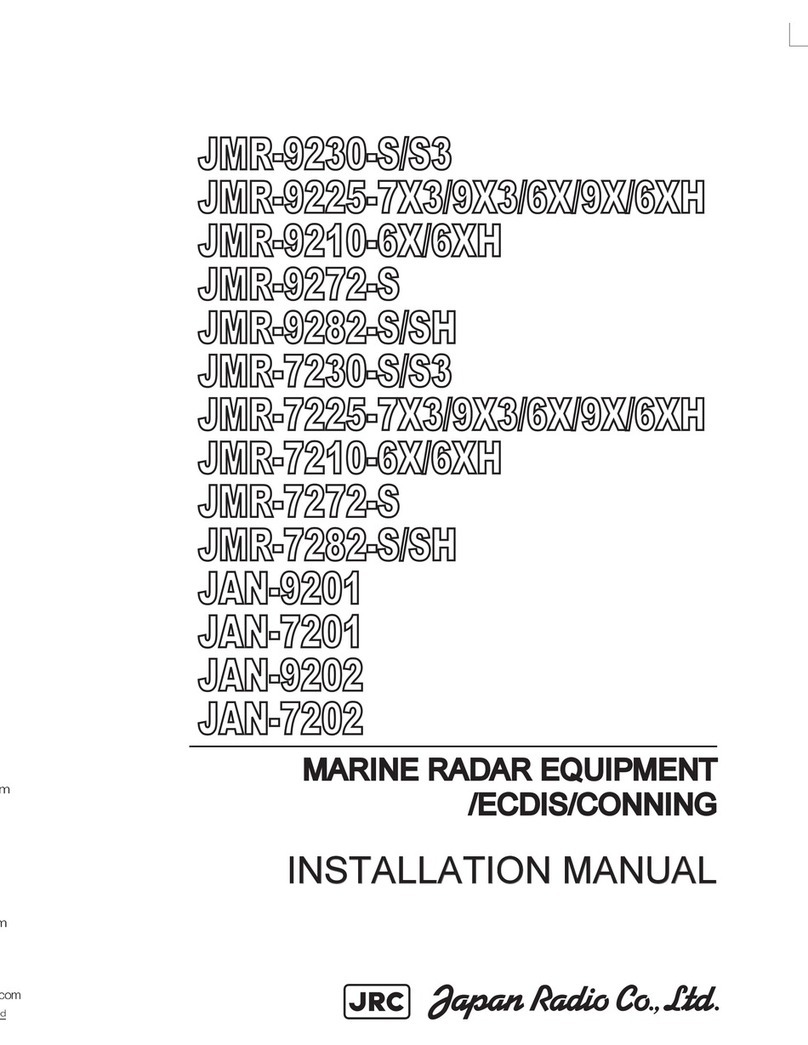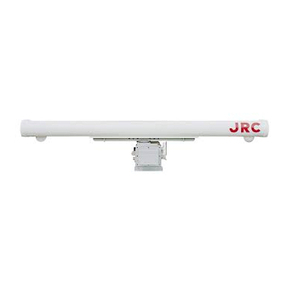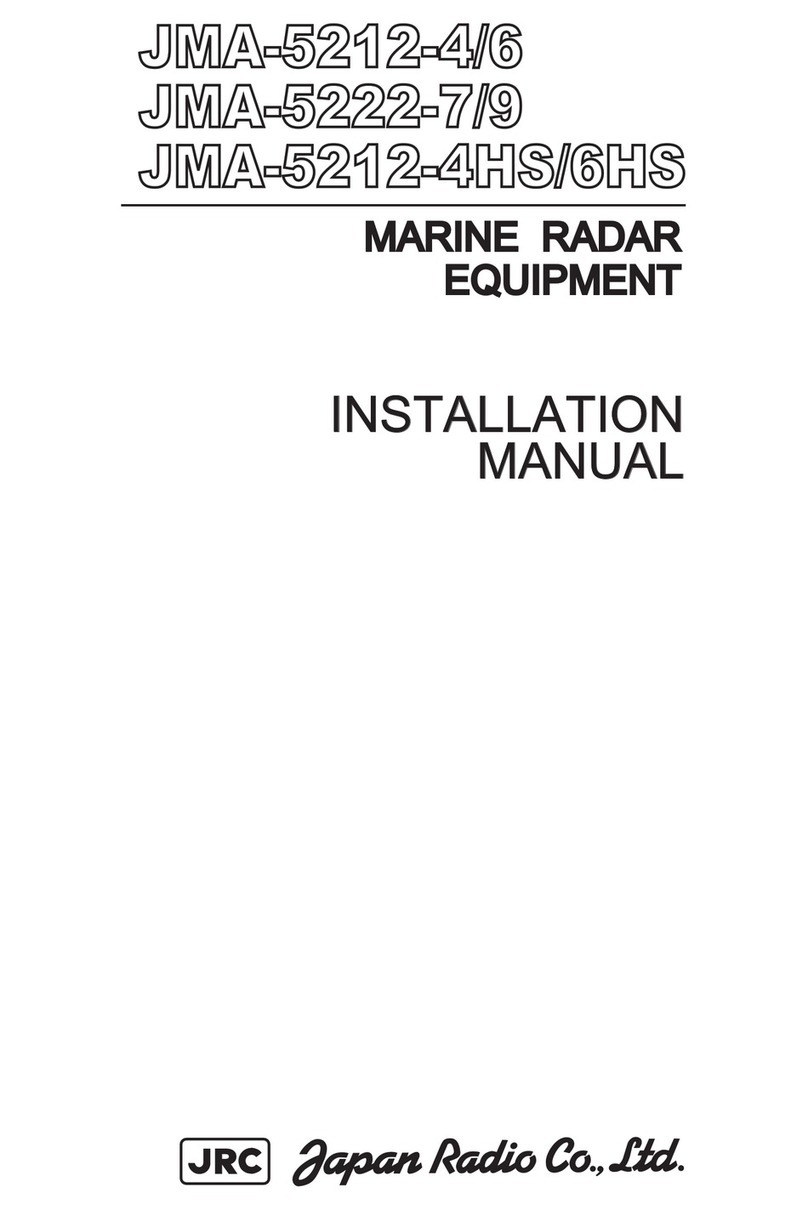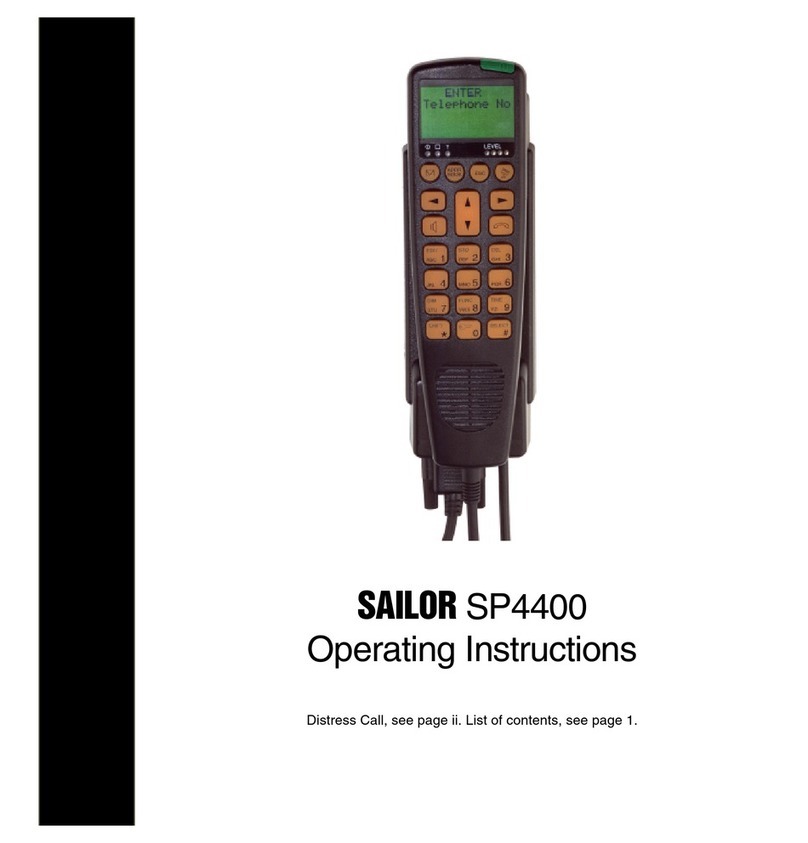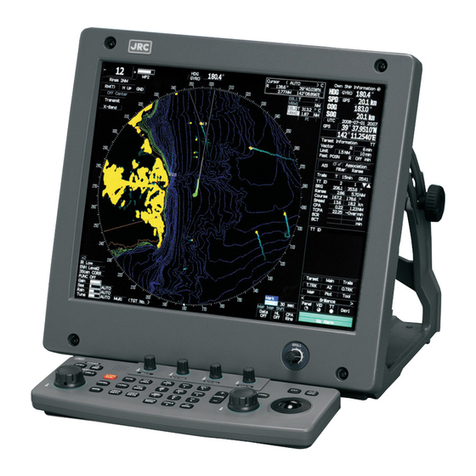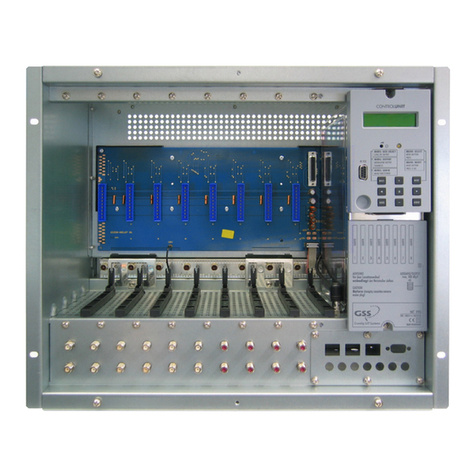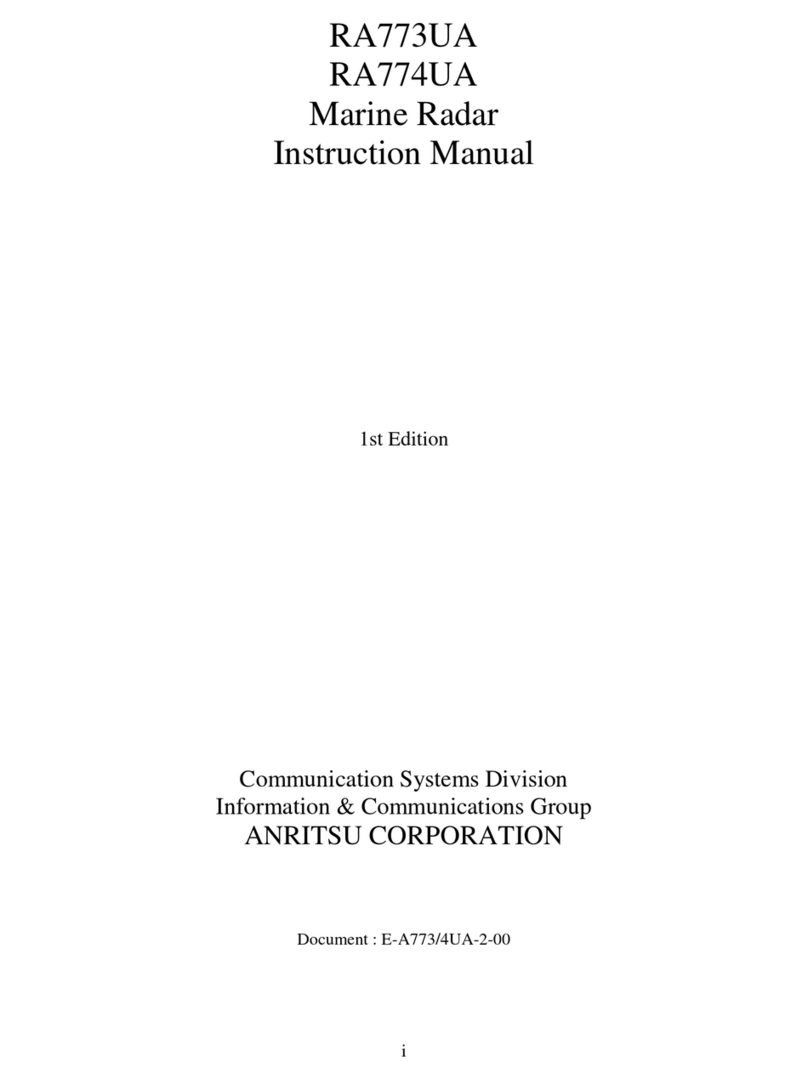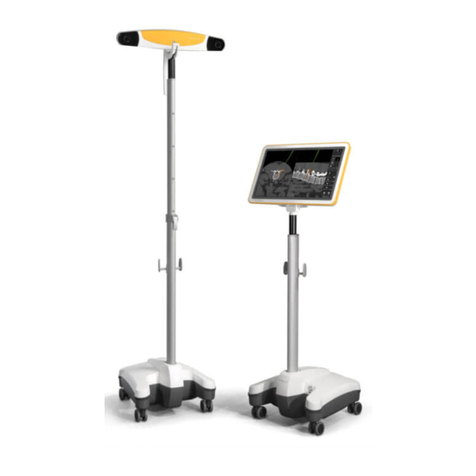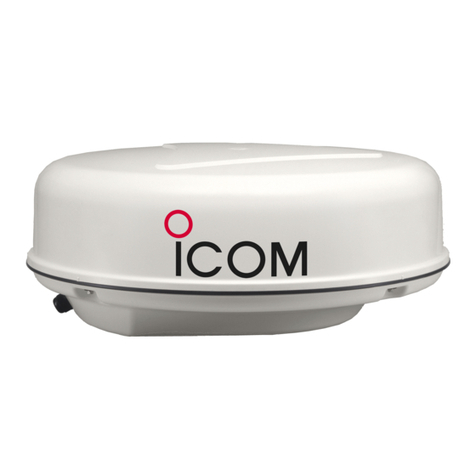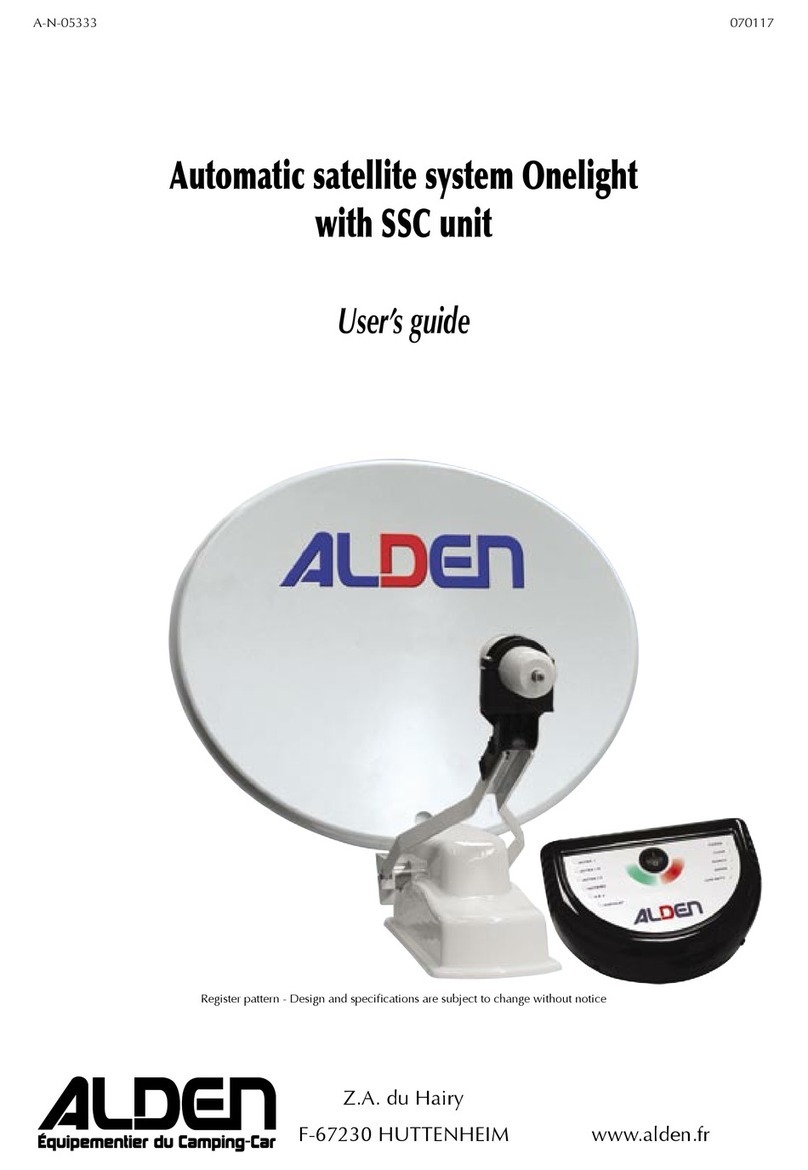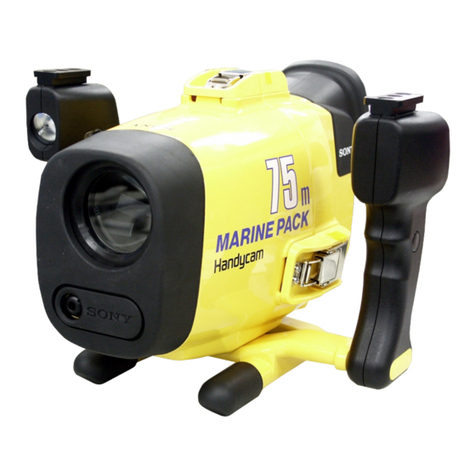1
SCANNER UNIT
Mounting Considerations,
Precautions
• The scanner unit is generally installed ei-
ther on top of the wheelhouse or on the ra-
dar mast on a suitable platform. Locate the
scannerunit wherethere is agood all-round
view. Any obstruction will cause shadow
and blind sectors.Amast for instance, with
adiameter considerably lessthan the width
ofthe radiator,will causeonly a small blind
sector, but a horizontal spreader or
crosstrees in the same horizontal plane as
the scanner unit would be a much more
serious obstruction; you would need to
place the scanner unit well above or below
it.
• Itis rarelypossible toplace thescanner unit
where a completely clear view in all direc-
tions is available. Thus, you should deter-
minethe angularwidth andrelative bearing
of any shadow sectors for their influence
on the radar at the first opportunity after
fitting.
• If you have a radio direction finder on your
boat, locate its scanner clear of the scan-
ner unit to prevent interference to the di-
rection finder. A separation of more than
two meters is recommended.
• To lessen the chance of picking up electri-
calinterference, avoidwhere possible rout-
ing the signal cable near other onboard
electrical equipment. Also avoid running
the cable in parallel with power cables.
• A magnetic compass will be affected if
placed too close to the scanner unit. Ob-
serve the following compass safe distances
to prevent deviation of a magnetic com-
pass: Standard compass, 1.00 m, Steering
compass, 0.75 m.
• Do not paint the radiator aperture, to en-
sure proper emission of the radar waves.
• When this radar is to be installed on larger
vessels, consider the following points:
• The signal cable run between the scan-
ner and the display comes in lengths of
10 m (standard), 15 m, 20 m and 30 m.
Whatever length is used it must be un-
broken; namely, no splicing allowed.
• Deposits and fumes from a funnel or
other exhaust vent can adversely affect
the aerial performance and hot gases
may distort the radiator portion. The
scannerunit mustnot bemounted where
the temperature is more than 70°C.
Mounting Methods
Asshown in thefigure below, the scanner unit
may be installed on the bridge, on a common
mast or on a dedicated mast.
(a) On bridge (b) Common mast (c) Dedicated mast
Figure 1 Scanner unit mounting methods
Fixing Holes in Mounting
Platform
Referring to the outline drawing on page D-
1, drill five holes in the mounting platform:
four holes of 15 mm diameter for fixing the
scanner unit and one hole of 25-30 mm diam-
eter for the signal cable.


